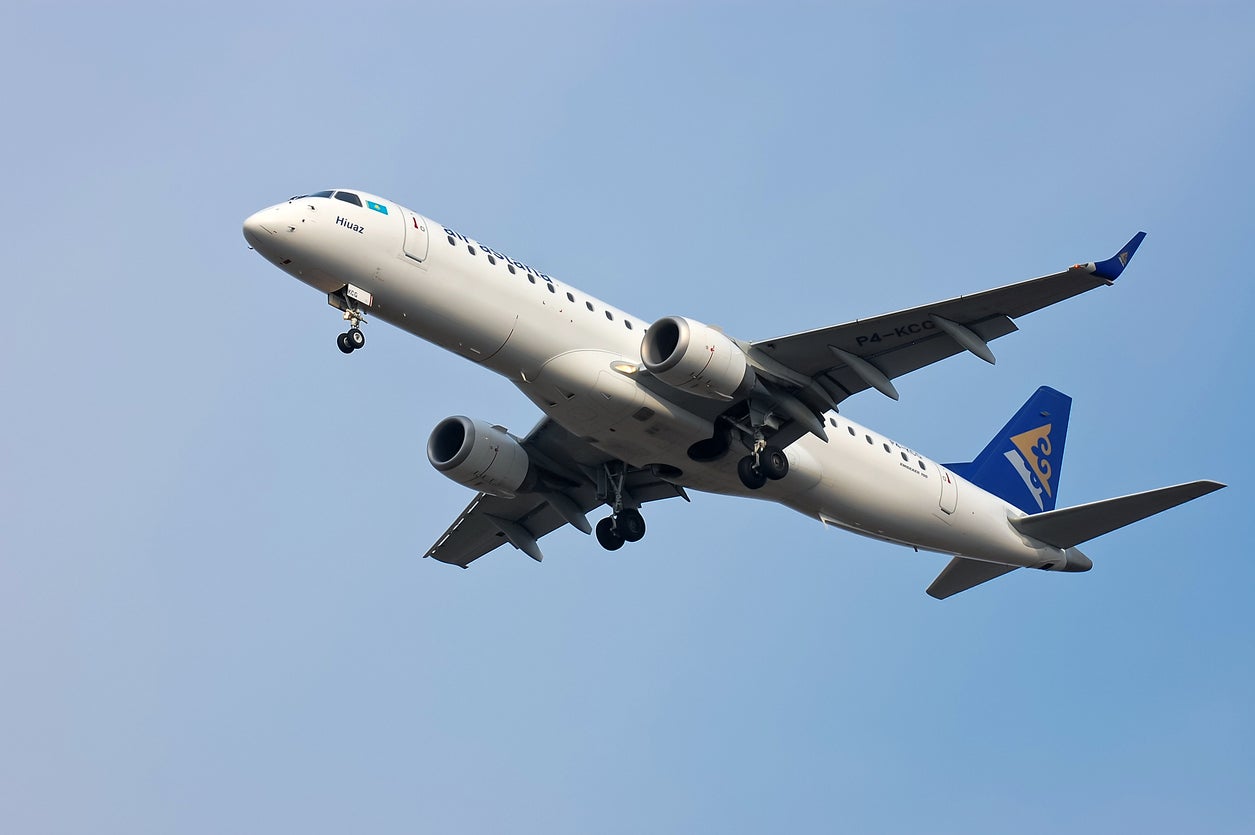Passenger jet pilot does 'incredible and completely insane' manouevres after losing control of plane over Portugal and deciding to ditch in sea
The commuter jet was on an empty ‘ferry flight’ to Kazakhstan
Your support helps us to tell the story
From reproductive rights to climate change to Big Tech, The Independent is on the ground when the story is developing. Whether it's investigating the financials of Elon Musk's pro-Trump PAC or producing our latest documentary, 'The A Word', which shines a light on the American women fighting for reproductive rights, we know how important it is to parse out the facts from the messaging.
At such a critical moment in US history, we need reporters on the ground. Your donation allows us to keep sending journalists to speak to both sides of the story.
The Independent is trusted by Americans across the entire political spectrum. And unlike many other quality news outlets, we choose not to lock Americans out of our reporting and analysis with paywalls. We believe quality journalism should be available to everyone, paid for by those who can afford it.
Your support makes all the difference.Fighter jets were scrambled to help a plane flying over Portugal as its pilots struggled for control and planned to ditch in the Atlantic.
A few minutes after the Embraer 190 belonging to Air Astana had taken off from a maintenance facility near Lisbon, the crew used the transponder to “squawk 7600” – indicating a failure of communications – and shortly afterwards declared a Mayday.
For the next 90 minutes, the aircraft flew a terrifying course of repeated tight turns and sudden descents, as the airspeed and altitude varied wildly.
At one point, while the aircraft was at 7,000 feet, the airspeed fell to 120mph, with a high risk of stalling.
The captain radioed that he had an “uncontrollable aircraft” and planned to ditch in the sea. Two F-16 fighter jets belonging to the Portuguese Air Force were mobilised to help.
The commuter jet, which had no paying passengers on board, had taken off at 1.31pm on Sunday 11 November from Alverca Airport, just northeast of Lisbon.
Two pilots and four technicians were aboard the aircraft, with the flight number KC1388. The Brazilian-made plane had spent six weeks undergoing maintenance, and was intended to operate a “ferry flight” to Minsk in Belarus – the first stage of a journey to Kazakhstan, the home of Air Astana.

But within a few minutes it became clear that the flight had serious problems. The climb ended at 5,000 feet and the aircraft began to descend.
As normal air traffic continued to fly in and out of Lisbon, the plane flew a bizarre course northeast of the Portuguese capital, with its altitude varying from 6,000 to 17,000 feet.
The weather was poor, giving pilots few visual clues.
A contributor to the pilots’ forum, PPRuNe, commented: “Those corkscrews brought Sioux City to mind. Yikes” – a reference to the 1989 United Airlines crash-landing in Sioux City, Iowa, in which 111 people died.
One of the aviation enthusiasts watching events, “Walker Eats It,” tweeted: “Whoever is at the controls of KC1388 right now is doing some incredible and completely insane s***. Hope they know what they’re doing and can land safely.”
Eventually control was restored. The aircraft flew east towards the Spanish border, then turned southwest. It is reported to have made two “go-arounds” before a safe landing at Beja Airport in central Portugal.
Two of the six people on board suffered injuries during the ordeal and were taken to hospital.
The Air Astana statement called the incident, with some understatement, “an unplanned landing,” saying: “Embraer 190, callsign KС 1388, conducted a ferry flight from the Lisbon Aviation Technical Centre when, due to technical reasons the crew decided to perform an unplanned landing.
“At 15.26 UTC the aircraft safety landed at the airport of Beja. There were no passengers on board.”
After the landing, speculation on the pilots’ forum continued. “Being an Embraer 190 pilot myself, I think they probably turned it off and on again,” wrote “SigWit”.
“That usually fixes any problem on the plane.”
The investigation into the crash of a Lion Air flight in Indonesia last month, in which 189 people died, is focusing on instrument problems.

Join our commenting forum
Join thought-provoking conversations, follow other Independent readers and see their replies
Comments